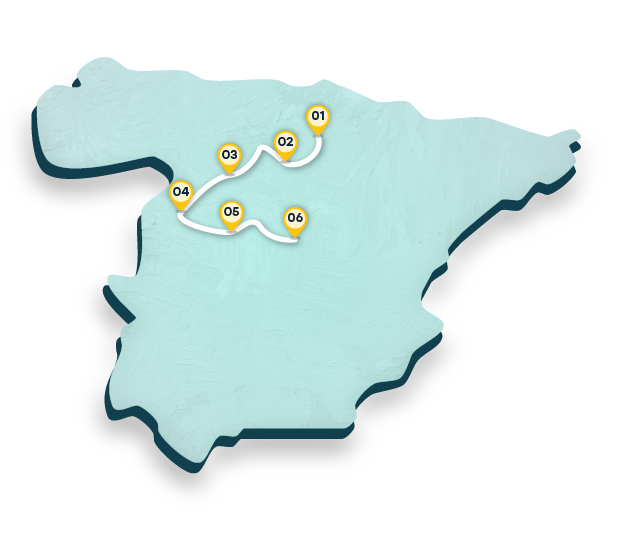The beginnings
Around the 11th century a certain student or preacher noted, in the margins of a Latin text, the first testimony written in the Castilian language which has survived until our times. They are the famous “Emilian Glosses” of the Riojan monastery of San Millán de la Cogolla, the birthplace of a language which is now used by more than 500 million people. It is here this journey starts, in San Millán de la Cogolla, in La Rioja. Here stand the monasteries of Yuso and Suso, the place where the celebrated “Emilian Glosses” appeared. These first utterances of Castilian continued in the “Silos Glosses”, recorded 110 km away in the monastery of Santo Domingo de Silos in the province of Burgos.

The expansion
Later is was the universities of Valladolid and Salamanca that contributed to the expansion of Castilian. The publication of the Grammar of the Castilian Language by Antonio de Nebrija and the intense cultural life happening in these cities at the time converted them into important cultural focal points in the area. Over time, the capacity to think and imagine would be evidenced in great novels such as El Lazarillo de Tormes and La Celestina. Also in the work of figures like Saint Teresa of Jesus and Saint John of the Cross, whose writing from the convents and monasteries of Ávila converted them into the first writers of mystical literature.

The peak
Finally, the Castilian language would reach its peak in Alcalá de Henares, birthplace of Miguel de Cervantes, the author of Don Quijote. The spirit of the great writer is present in every corner of the city, in its squares, theatres and monuments, and in its cultural programme...











